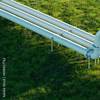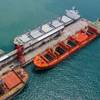While declining Asian LNG prices have reduced margins on the long-distance LNG trade, causing spot-charter rates for LNG vessels to fall, LPG shipping earnings are forecast to remain buoyant on the back of low oil prices and the absence of fuel substitution.
According to LPG Forecaster, published by global shipping consultancy Drewry, low oil prices have not triggered the substitution of LPG as the fuel of industrial use, as feared by some analysts. As a result, LPG shipping demand has remained intact and low bunker prices have supported vessel earnings.
Another report from Interfax says that high LNG prices in Asia made it profitable for producers in the Atlantic basin to deliver LNG to the Pacific, tying up LNG tankers in long-distance charters. With lower prices, these are no longer economic and charter rates are falling.
According to the International Group of Liquefied Natural Gas Importers, the long-distance LNG trade has benefited from an oversupplied LNG shipping market, as vessel numbers increased since 2011 while global demand remained largely flat. There were 359 active LNG carriers in 2011 when global LNG trade amounted to 240 mt. This increased to 393 vessels in 2013 when global trade was just 236 mt.
Around 30 new LNG carriers were delivered in 2014, according to GTT, an engineering company that specializes in LNG storage and transport, while LNG trade increased to 246 mt, according to Wood Mackenzie.
The fall in shipping costs has contributed to the continued decline in LNG prices in Asia, which averaged less than $8/MMBtu for delivery in March – making long-distance shipping even less profitable.
Meanwhile, Drewry expects the LPG usage trend to continue, as 60% of global consumption is residential whose demand is largely inelastic to oil price change.
The remainder is largely consumed by petrochemical production and Drewry estimates that only 20% of the sector’s capacity is capable of switching away from LPG fuel. Historically, LPG consumption has proven remarkably stable in spite of oil price volatility.













